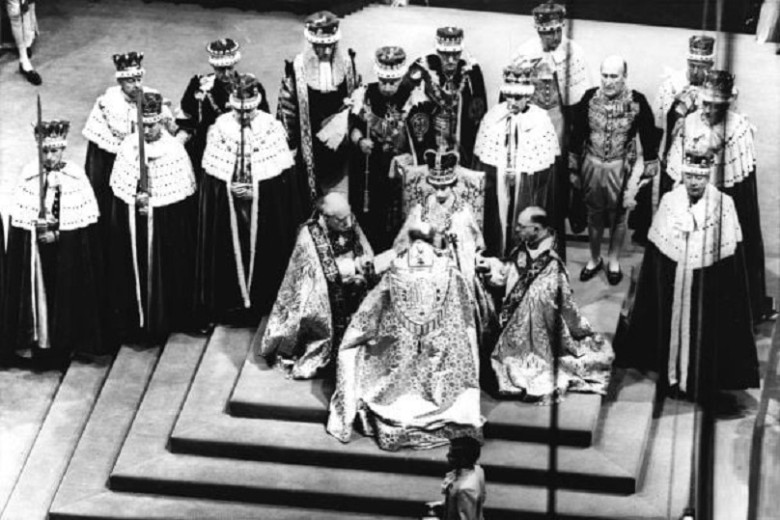
End of an Era: The Life and Reign of Queen Elizabeth II
Queen Elizabeth II was one of the longest-reigning monarchs in history. She surpassed her great-great-grandmother, Queen Victoria, who reigned for 64 years. Elizabeth II also lived longer. Today, on the first anniversary of her death, we recount her long life, her family, and the crown she wore for 70 years.

The Childhood of Young Princess
Princess Elizabeth was born on April 21, 1926, to Elizabeth Bowes-Lyon and Prince Albert, Duke and Duchess of York. She entered the world in the London district of Mayfair, at the residence of the Earl of Strathmore on Bruton Street, house number 17. This house no longer exists; a Chinese restaurant now occupies the site, and a memorial plaque on its wall indicates that Elizabeth II was born there.

In her family, Princess Elizabeth was affectionately called Lilibet. This nickname was first used by her younger sister, Princess Margaret, who was unable to pronounce her full name, Elizabeth, and simply called her Lilibet. Throughout her life, her husband, Prince Philip, Duke of Edinburgh, who passed away in 2021—one and a half years before the queen—called her by this name. The princess was homeschooled under her mother’s supervision and also by governess Marion Crawford and the headmaster of Eton College, Sir Henry Marten. From a young age, she loved horses, enjoyed horseback riding, and adored dogs.
The Heir Apparent
When Princess Elizabeth was born, she was only third in line for the throne and was not considered likely to ascend to it. After the death of her grandfather, King George V, the new king was to be his elder son—Prince Edward, Elizabeth's uncle. However, Edward VIII, who occupied the throne for 10 months, was never crowned; he publicly abdicated to marry the divorced American Wallis Simpson. His younger brother, George VI, was crowned on May 12, 1937, the day originally designated for Edward VIII's coronation.

Elizabeth, George VI's elder daughter, thus became the heir to the throne. At that time, she remained in the status of “presumptive heir,” as if George and Elizabeth Bowes-Lyon had a son, the throne would pass to him. When Princess Elizabeth turned 21, she addressed the nation via radio and solemnly promised to dedicate her life to serving the British Empire. Her statement included: "I want to make now a declaration. Very simple. I declare before all of you that my whole life, whether it be long or short, shall be devoted to your service and to the service of our great Imperial Family to which we all belong."
Marriage to a Greek Prince
Princess Elizabeth met Prince Philip in 1934 when she was 8 years old, and he was 13. This encounter took place at the wedding of Greek Princess Marina at Westminster Abbey. Their next meeting occurred at the coronation of Elizabeth’s father—when she was 11—and two years later, at 13, she realized she had fallen in love with handsome Philip, who was already 18. Philip was studying at the Royal Naval College in Dartmouth, thanks to relatives who lived in Britain.

Prince Philip was the son of Greek Prince Andrew, the son of King George I of Greece and younger brother of King Constantine I. He was born with the title of Prince of Greece and Denmark. His grandfather, King George I of Greece, was assassinated in 1913, and his uncle was overthrown. Philip's father had to flee Greece with his family to Paris after losing all his titles. Philip's parents divorced, and for some time, he lived with his mother, Alice. When she went mad, his father took him back and soon sent him to live with relatives in Britain.

Philip and Elizabeth were distant relatives, fourth cousins, with a common great-great-grandmother, Victoria. However, neither this fact nor any other circumstances deterred them from their decision to marry. On November 20, 1947, the wedding of 21-year-old Princess Elizabeth and 26-year-old Philip Mountbatten—a British naval officer, a participant in World War II, and a member of both the Greek and Danish royal families—took place at Westminster Abbey. Their engagement was announced on July 9, 1947. The day before the wedding, Philip received the title of Duke of Edinburgh.

The couple had four children: Prince Charles (the new King of the United Kingdom), their only daughter Princess Anne, and two more sons—Prince Andrew and Prince Edward. The royal couple had twelve grandchildren. The first granddaughter, Savannah Phillips, the daughter of Princess Anne, was born on December 29, 2010. They lived together in marriage for 74 years—Prince Philip passed away on April 9, 2021, just three months short of his 100th birthday.

The Coronation of Elizabeth II and Years of Reign
Queen Elizabeth’s father, King George VI, died on February 6, 1952. At that time, she was on vacation in Kenya with Philip. Two days after the king's death—on February 8, 1952—Elizabeth II, accompanied by Prince Philip, took the oath of the Privy Council and signed the declaration of her succession. The official announcement of Her Majesty Elizabeth II's accession to the throne was made an hour later by the herald from the balcony of St. James's Palace, ending with the words, "God save the queen!" All flags in London, which had been lowered after the king's death, were simultaneously raised in honor of the new Queen of the United Kingdom.

Elizabeth II's coronation took place on June 2, 1953, at Westminster Abbey, making it the first coronation of a British monarch to be televised. It was watched by 27 million people worldwide. On June 15, 1953, there was a naval parade in Portsmouth to celebrate Elizabeth II's ascent to the throne. Following that, the queen embarked on a six-month tour of Commonwealth countries, which continued until May 1954.

Elizabeth II was the first monarch to visit Australia and New Zealand; she also traveled to Fiji, Tonga, Jamaica, the Bermudas, Panama, and covered a total distance of 64,000 kilometers. The beginning of her reign was marked by a rise in optimism in Britain and Commonwealth countries after World War II; the new "Elizabethan era" was like a breath of fresh air.

During her reign from 1952 to 2022, Queen Elizabeth II met with countless people, including presidents, heads of government, and other important figures. Many things she did were firsts; for instance, on December 25, 1957, she became the first British monarch to wish her subjects a Merry Christmas on television (previously, this was always done by radio). On July 15, 1961, Elizabeth II hosted the first cosmonaut, Yuri Gagarin, at Buckingham Palace. And on March 26, 1976, she became the first among heads of state to use email, sending the first electronic message. It was Elizabeth II who wrote a letter to her son, Prince Charles, and his wife, Princess Diana, urging them to divorce, leading to the most critical scrutiny of the monarch regarding her restraint and lack of reaction to the death of her former daughter-in-law.

In 2012, a law was passed that changed the order of succession, allowing female heirs to lose their priority over male heirs. That same year marked the Diamond Jubilee of Elizabeth II—60 years on the throne. Three years later, Elizabeth II became the longest-reigning monarch in British history.

In February 2017, the queen celebrated her Sapphire Jubilee—65 years on the throne. On November 20 of that same year, Elizabeth II and her husband, Prince Philip, became the first royal couple to celebrate their platinum wedding anniversary—70 years. Their royal marriage became the longest in world history. After Philip's death in 2021, Elizabeth II became the first British monarch since Queen Victoria to be a widow while on the throne. In June 2022, the queen celebrated her Platinum Jubilee—70 years of reign.

The Funeral of Queen Elizabeth II
The state funeral of Queen Elizabeth II took place ten days after her death. Her body lay in Westminster Abbey until the funeral, allowing people to come and pay their respects. After a farewell service at the abbey, attended by around two thousand guests, the queen's coffin was transported to Windsor Castle, where Elizabeth II was buried in St. George's Chapel next to her father, mother Elizabeth, and sister Princess Margaret. Following this, the body of her husband, Prince Philip, was also reinterred in the same chapel.




















Comments
0 comment